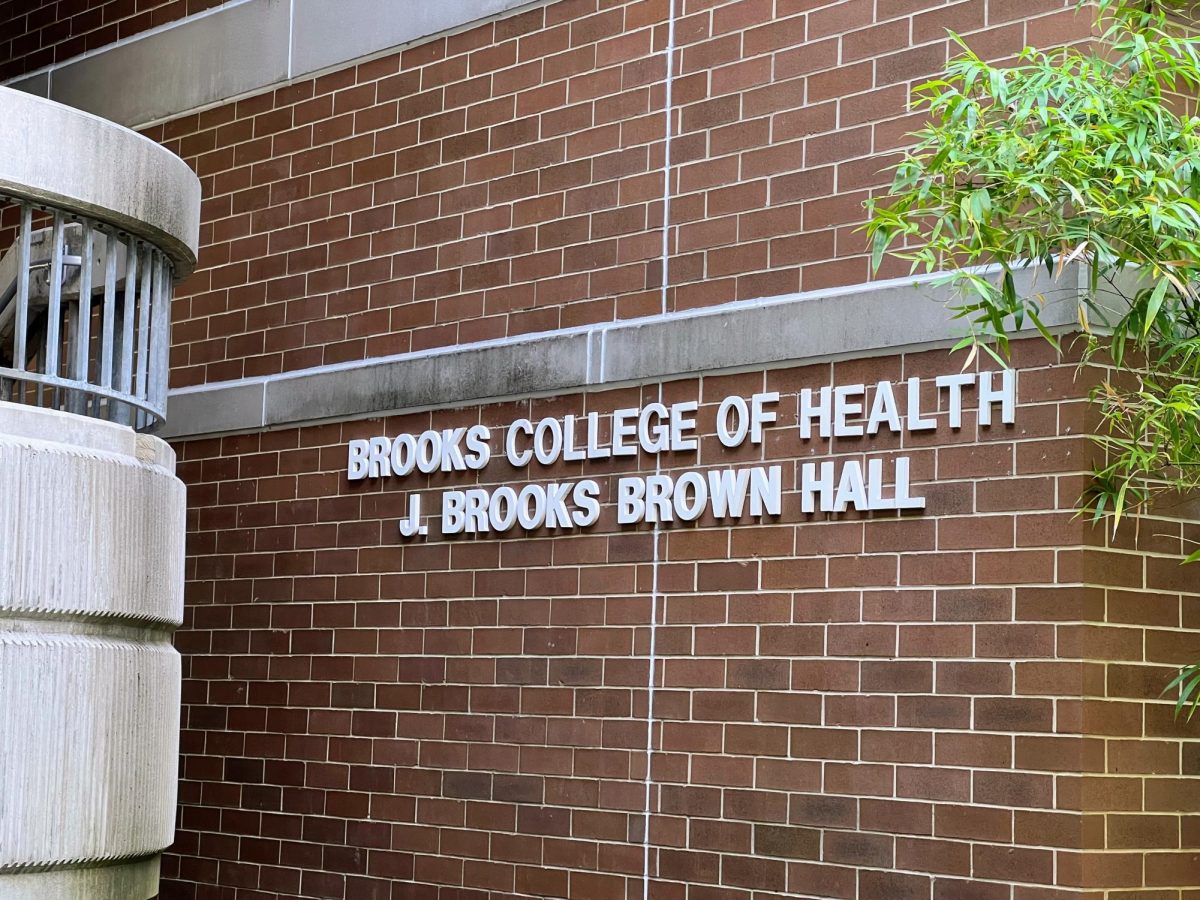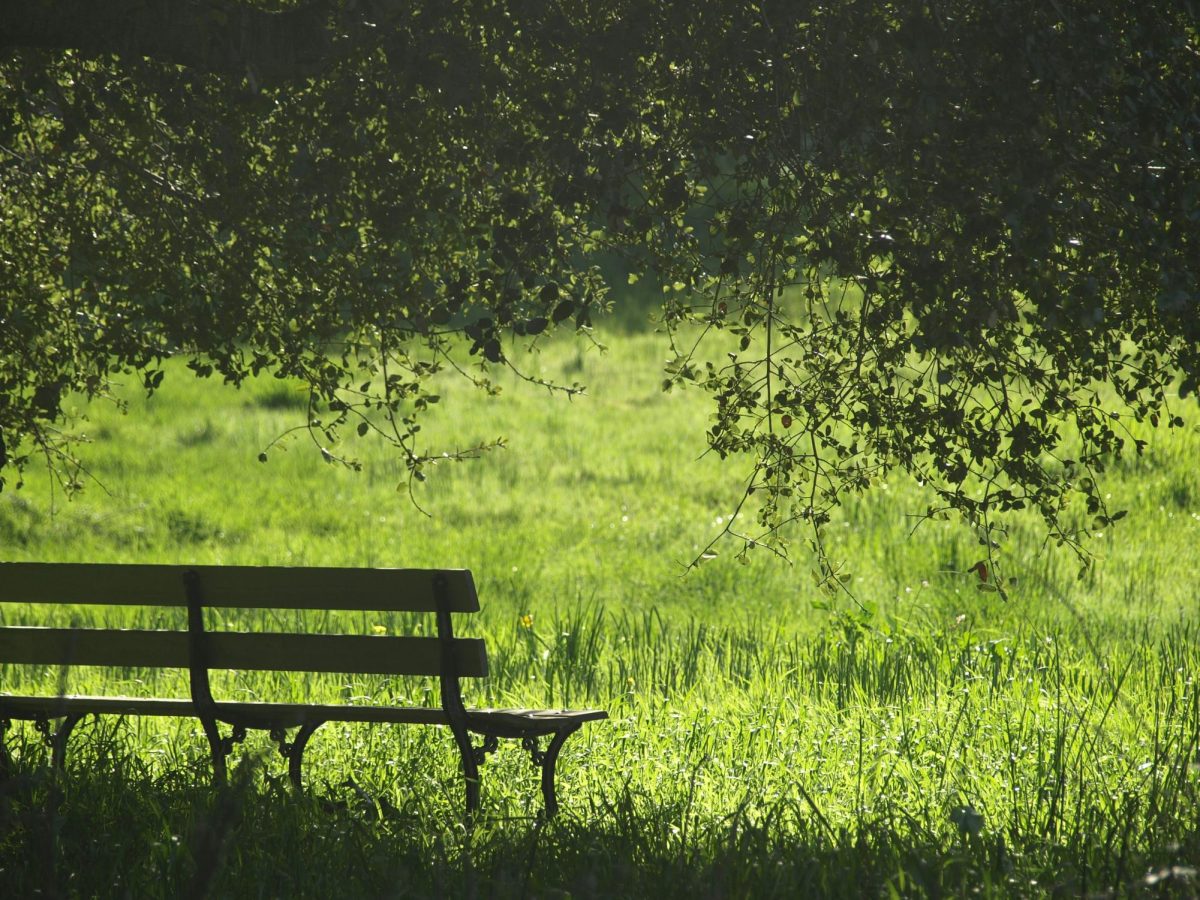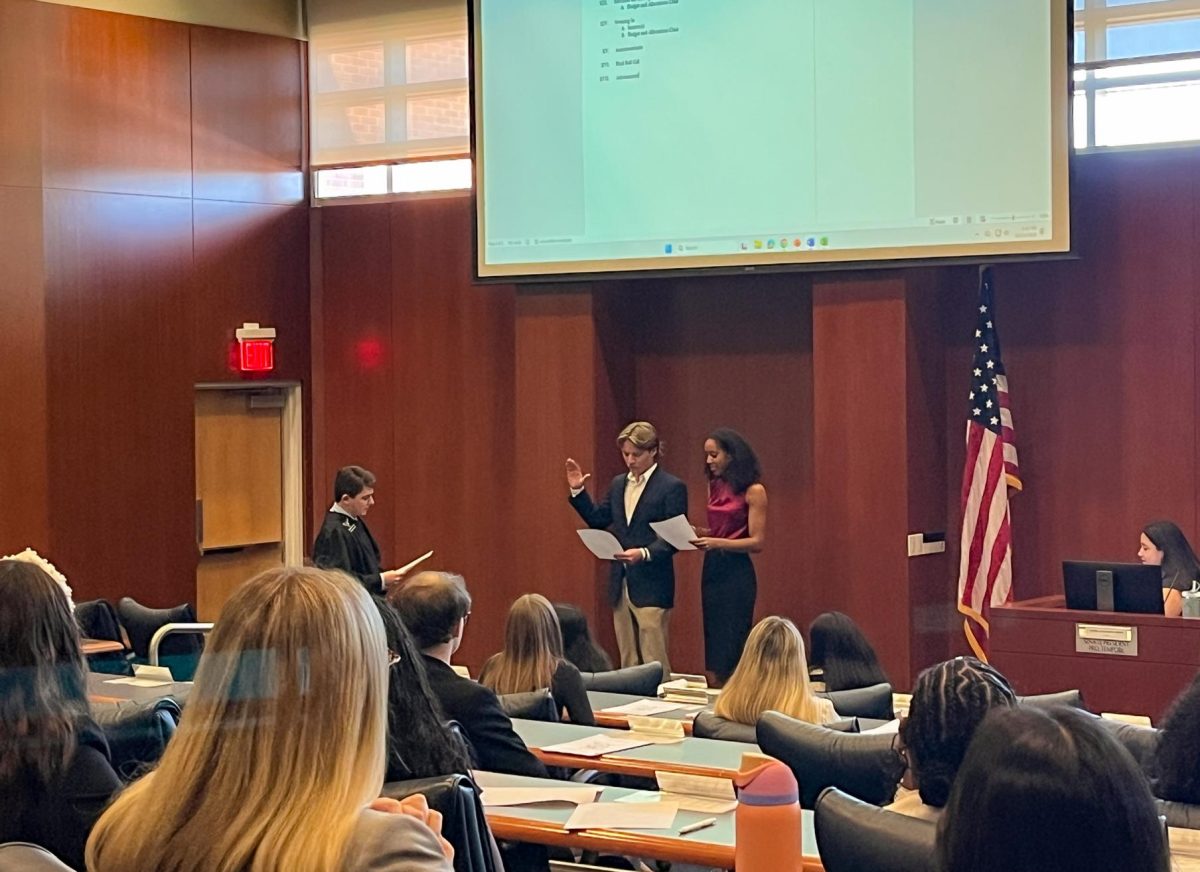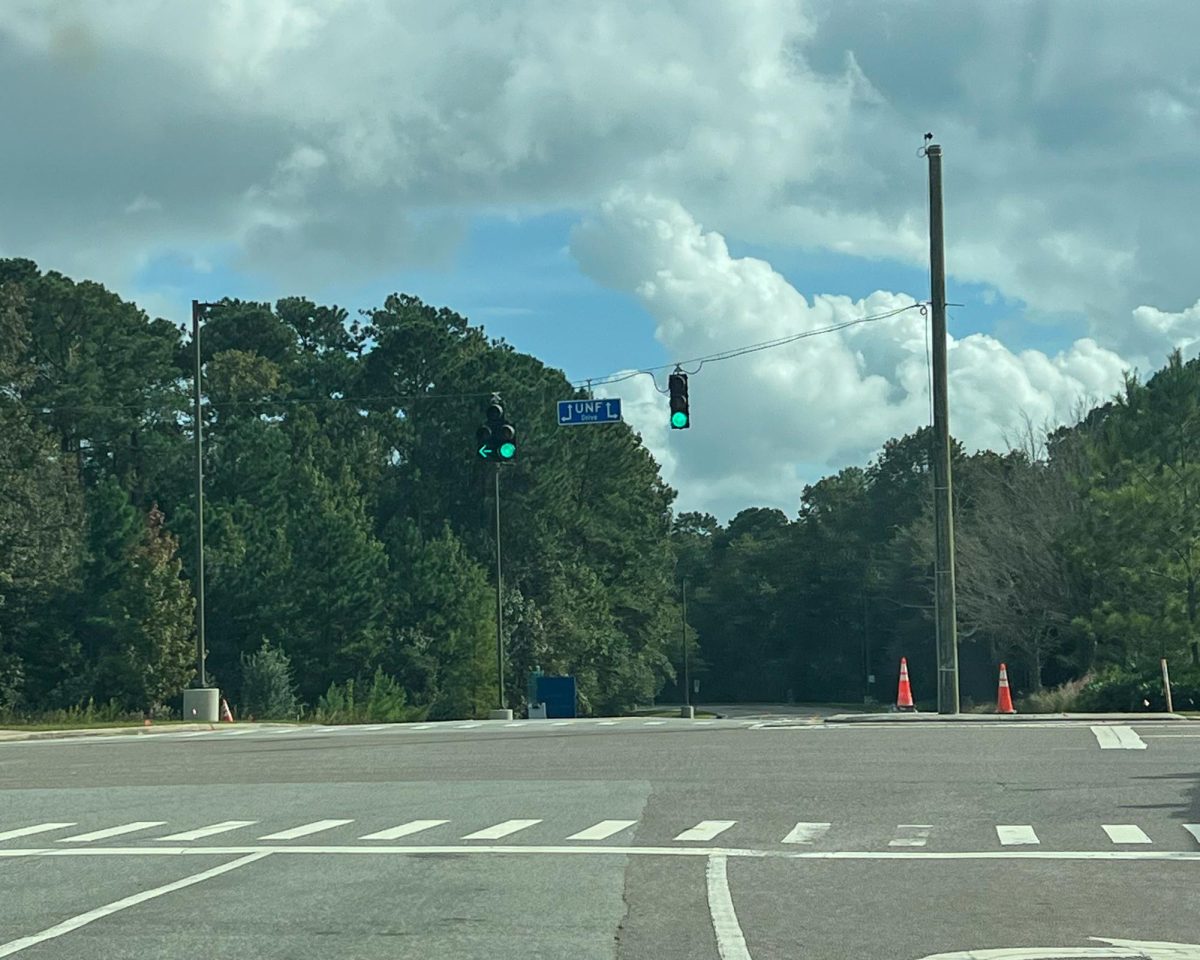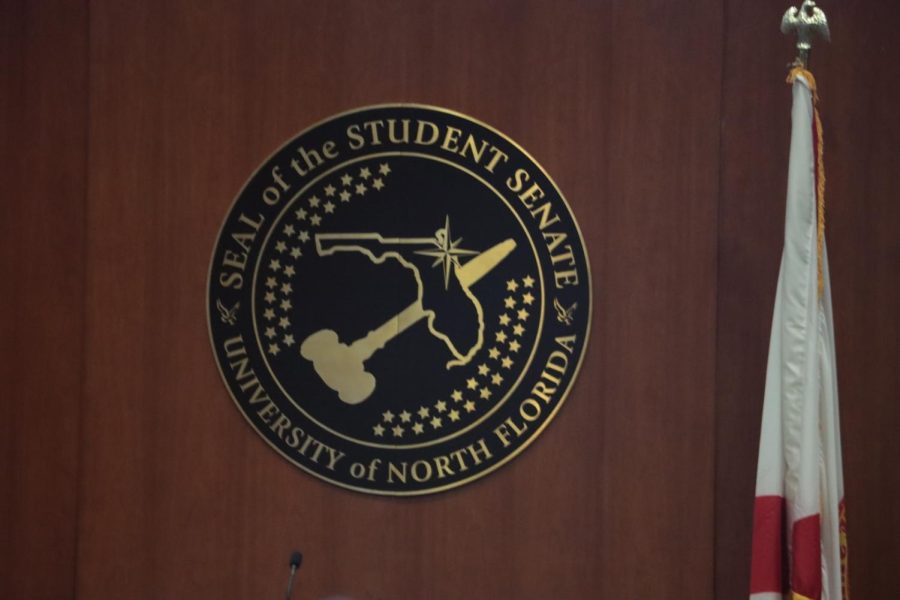JERUSALEM (AP) — Christians are commemorating Jesus’ crucifixion without the solemn church services or emotional processions of past years, marking Good Friday in a world locked down by the coronavirus pandemic.
The chanting of a small group of clerics inside Jerusalem’s Church of the Holy Sepulcher echoed faintly through the heavy wooden doors, as a few people stopped and kneeled outside to pray. The centuries-old church, built on the site where Christians believe Jesus was crucified, buried and rose from the dead, is usually packed with pilgrims and tourists.
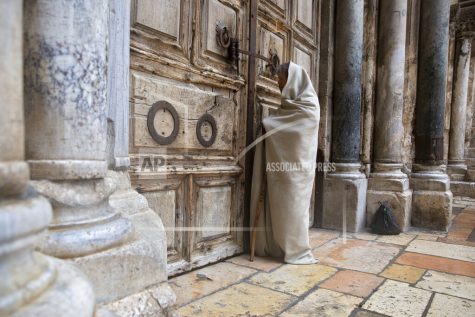
A Christian worshiper stands at the closed door of the Church of the Holy Sepulchre, believed by many Christians to be the site of the crucifixion and burial of Jesus Christ, in Jerusalem, Friday, April 10, 2020. Christians are commemorating Jesus’ crucifixion without the solemn church services or emotional processions of past years, marking Good Friday in a world locked down by the coronavirus pandemic.(AP Photo/Sebastian Scheiner)
Later, four monks in brown robes and blue surgical masks prayed at the stations of the cross along the Via Dolorosa, the ancient route through the Old City where Jesus is believed to have carried the cross before his execution at the hands of the Romans. It runs past dozens of souvenir shops, cafes and hostels, nearly all of which are closed.
In ordinary times, tens of thousands of pilgrims from around the world retrace Jesus’ steps in the Holy Week leading up to Easter. But this year, flights are grounded and religious sites in the Holy Land are closed as authorities try to prevent the spread of the virus.
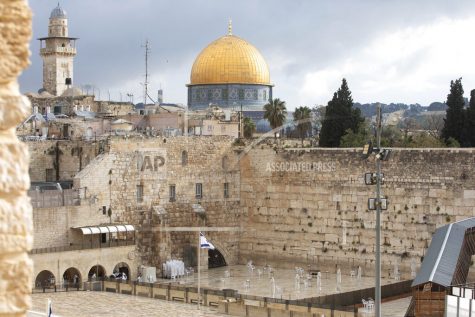
The Dome of the Rock Mosque in the Al Aqsa Mosque compound, and the Western Wall, the holiest site where Jews can pray, are seen in Jerusalem’s Old City, Friday, April 10, 2020. Christians are commemorating Jesus’ crucifixion without the solemn church services or emotional processions of past years, marking Good Friday in a world locked down by the coronavirus pandemic. (AP Photo/Sebastian Scheiner)
James Joseph, a Christian pilgrim from Detroit dubbed “the Jesus guy” because he wears robes and goes about barefoot, lives near the Church of the Holy Sepulcher year-round. On Friday morning he had the plaza outside to himself. He said Good Friday has special meaning this year.
“The crucifixion is the saddest thing possible, and he felt what we feel right now,” he said. “But thanks be to God. … He rose from the dead and changed the world on Easter.”
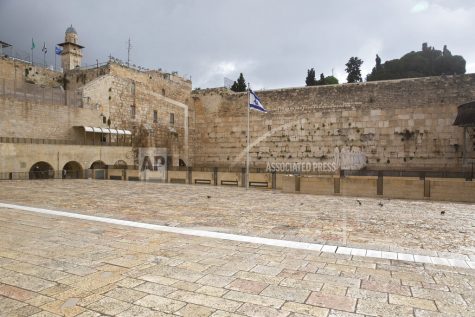
The Western Wall, the holiest site where Jews can pray, in Jerusalem’s Old City, is empty Friday, April 10, 2020. Christians are commemorating Jesus’ crucifixion without the solemn church services or emotional processions of past years, marking Good Friday in a world locked down by the coronavirus pandemic. (AP Photo/Sebastian Scheiner)
The new virus causes mild to moderate symptoms in most patients, who recover within a few weeks. But it is highly contagious and can be spread by those who appear healthy. It can cause severe illness and death in some patients, particularly the old and infirm.
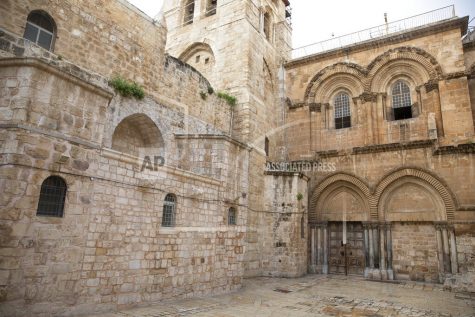
This Friday, April 10, 2020 photo shows the Church of the Holy Sepulchre, believed by many Christians to be the site of the crucifixion and burial of Jesus Christ, in Jerusalem’s Old City. Christians are commemorating Jesus’ crucifixion without the solemn church services or emotional processions of past years, marking Good Friday in a world locked down by the coronavirus pandemic. (AP Photo/Sebastian Scheiner)
In Rome, the torch-lit Way of the Cross procession at the Colosseum is a highlight of Holy Week, drawing large crowds of pilgrims, tourists and locals. It’s been cancelled this year, along with all other public gatherings in Italy, which is battling one of the worst outbreaks.
The virus has killed More than 18,000 people in Italy and over 95,000 worldwide, according to data gathered by Johns Hopkins University.
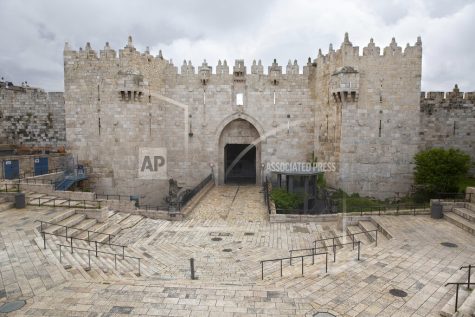
The Damascus Gate sits empty in Jerusalem’s old city, Friday, April 10, 2020. Christians are commemorating Jesus’ crucifixion without the solemn church services or emotional processions of past years, marking Good Friday in a world locked down by the coronavirus pandemic. (AP Photo/Sebastian Scheiner)
Instead of presiding over the Way of the Cross procession, Pope Francis will lead a Good Friday ceremony in St. Peter’s Square without the public.
Ten people — five from the Vatican’s health office and five from a prison in Padua, in northern Italy, where infections are particularly widespread — will participate in the procession, which will circle several times around the obelisk in St. Peter’s Square.
On display in the square will be a wooden crucifix, famed for being carried in a procession during the plague that ravaged Rome in the early 16th century.
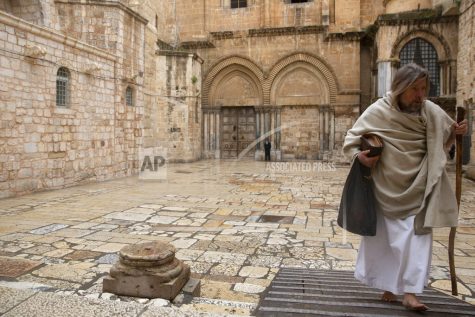
A Christian walks past the Church of the Holy Sepulchre which, believed by many Christians to be the site of the crucifixion and burial of Jesus Christ, in Jerusalem, Friday, April 10, 2020. Christians are commemorating Jesus’ crucifixion without the solemn church services or emotional processions of past years, marking Good Friday in a world locked down by the coronavirus pandemic. (AP Photo/Sebastian Scheiner)
In Spain, which has also been hit especially hard, Good Friday is traditionally a day of celebrations, especially in the south. People traditionally fill the streets to watch processions of religious brotherhoods carrying heavy, elaborately decorated platforms bearing statues of Jesus Christ and the Virgin Mary.
There will be no festivities this year, as the country battles an outbreak that has claimed more than 15,000 lives. Many churches are instead holding services online.
“With the pandemic that we have due to the coronavirus, the people are once again remembering the story of Jesus,” said Francisco Lucena, a member of a brotherhood in a town near the southern city of Córdoba.
In Paris, a ceremony was held in the charred and gutted interior of Notre Dame Cathedral, which was nearly destroyed by fire a year ago. The ceremony was closed to the public because of the virus lockdown and because the structure is not deemed safe for parishioners.
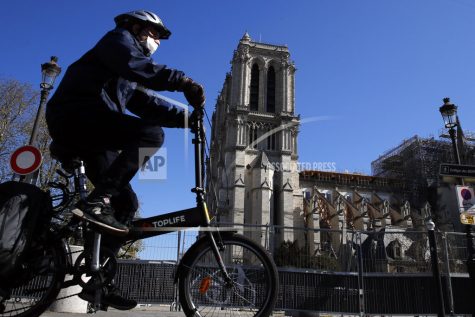
A man wearing a face mask rides his bike in front of Notre Dame cathedral during a nationwide confinement to counter the Covid-19, in Paris, Sunday, April 5, 2020. The new coronavirus causes mild or moderate symptoms for most people, but for some, especially older adults and people with existing health problems, it can cause more severe illness or death. (AP Photo/Christophe Ena)
Archbishop Michel Aupetit and three other clergymen wore hard hats as they entered the damaged cathedral before taking them off for the ceremony. Standing before a large cross and beneath a gaping hole in the roof, they sang, prayed and venerated a crown of thorns that survived the flames.
Classical musician Renaud Capuçon played violin, the mournful notes echoing off the walls and pillars. Actors Judith Chemla and Philippe Torreton delivered readings, and Chemla sang a moving rendition of “Ave Maria.” All three wore white protective overalls.
The bishop said the ceremony, which was broadcast live, showed that “life is still here,” even as the pandemic is “spreading death and paralyzing us.”
In the Philippines, Asia’s bastion of Catholicism, masses and other solemn gatherings have been put on hold, including folk rituals that feature real-life crucifixions and usually draw thousands of tourists and penitents. The annual procession of the “Black Nazarene,” a centuries-old statue of Jesus, through downtown Manila, has also been canceled.
Churchgoers have been told to stay home and remember Jesus’ suffering through family prayers, fasting and by watching masses and religious shows on TV or online.
For Josille Sabsal, it’s a test of faith. The 30-year-old Catholic missionary tried to replicate an altar in her Manila home by setting up a laptop, a crucifix and small statues of Jesus and the Virgin Mary on a table.
“It’s different, because the priest is on a screen,” she said. “When the internet lags, the mass suddenly gets cut off and you have to look for another YouTube video.”
“I miss that moment in church when you say, ‘Peace be with you,’ to complete strangers and they smile back,” she said.
___
Associated Press writers Frances D’Emilio in Rome, Sergio Rodrigo in Aguilar de la Frontera, Spain, John Leicester in Paris and Jim Gomez in Manila contributed to this report.
__
For more information or news tips, or if you see an error in this story or have any compliments or concerns, contact editor@unfspinnaker.com.




